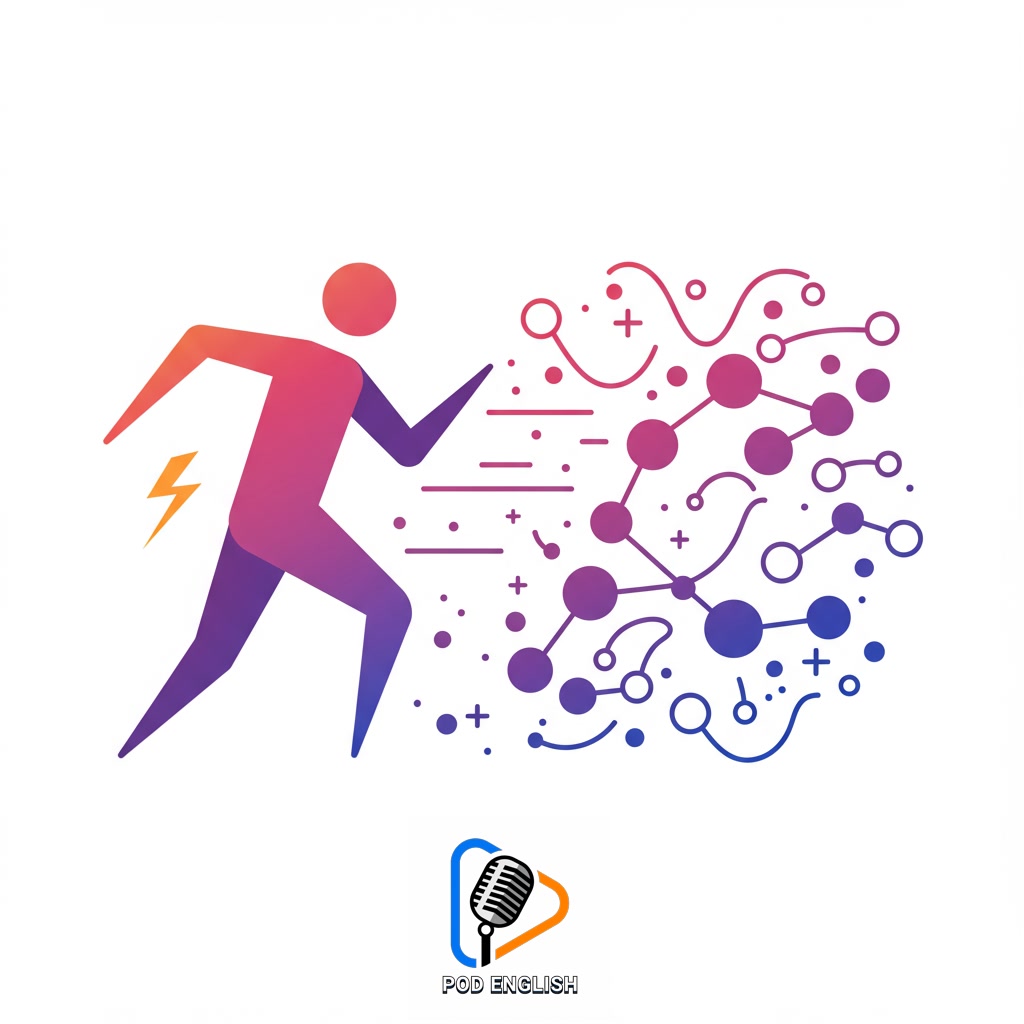Learn English
Boost Your English Study with Fitness Tracking
This content explores innovative methods to improve your English acquisition process. It specifically details how integrating fitness tracking into your routine can significantly enhance language skills. Discover practical strategies for combining physical activity data with your English learning objectives. This approach aims to make the journey towards fluency more engaging and effective.
Table of Contents
- Section 1: Introduction: The Unexpected Link Between Fitness and Language Learning
- Section 2: The Science Behind It: How Physical Activity Boosts Brain Function for Learning
- Section 3: Practical Strategies: Using Fitness Tracking Data to Structure Your Study
- Section 4: Real-World Examples: Integrating Fitness Tracking into Your English Routine
- Section 5: Choosing the Right Tools: Fitness Trackers and Apps for Learners
- Section 6: Maximizing Your Results: Tips for Consistency and Motivation
- Section 7: Conclusion: Making Fitness Tracking Your Secret Study Partner
Section 1: Introduction: The Unexpected Link Between Fitness and Language Learning
When you think about learning English, your mind probably goes straight to textbooks, grammar rules, and vocabulary lists. Physical fitness, like running or going to the gym, might seem like a completely separate part of your life. However, there’s a fascinating and powerful link between keeping your body active and improving your ability to learn, especially a complex skill like a new language. This document will explore this unexpected connection, showing you how simple habits related to tracking your fitness can actually boost your brain’s capacity for language acquisition. Understanding this link is the first step towards using physical activity not just for health, but as a tool to make your English learning journey more effective and enjoyable.

Section 2: The Science Behind It: How Physical Activity Boosts Brain Function for Learning
While learning English might seem purely academic, physical activity plays a crucial role in boosting your brain’s capacity to learn. When you exercise, your heart rate increases, pumping more oxygenated blood to the brain. This improved blood flow nourishes brain cells and promotes the growth of new neurons, particularly in areas vital for memory and cognitive function, like the hippocampus. Exercise also stimulates the release of brain-derived neurotrophic factor (BDNF), often called ‘brain fertilizer,’ which supports neuron health, survival, and plasticity—the ability of the brain to change and adapt. By enhancing these fundamental biological processes, regular physical activity improves concentration, memory retention, problem-solving skills, and overall cognitive performance, making your English study sessions more effective and productive.

Section 3: Practical Strategies: Using Fitness Tracking Data to Structure Your Study
Building on the understanding that physical activity enhances cognitive function, you can leverage fitness tracking data to strategically plan and optimize your English study sessions. Use metrics like daily step counts, active minutes, or even recovery heart rate to inform your study schedule. For example, designate dedicated study blocks immediately following your most energetic periods, as indicated by your tracker. Alternatively, set activity goals that, once achieved, unlock a reward of focused study time. Monitor your data over time to identify patterns: do you learn best after a brisk walk? Does a low step count correlate with feeling less focused? By syncing your physical activity data with your learning goals, you can create a more dynamic and effective study routine, ensuring you capitalize on moments of peak mental readiness.
![]()
Section 4: Real-World Examples: Integrating Fitness Tracking into Your English Routine
Building on the understanding that physical activity enhances cognitive function, you can leverage fitness tracking data to strategically plan and optimize your English study sessions. Use metrics like step count, heart rate, or sleep patterns to identify your most energetic times for tackling complex grammar concepts or engaging in challenging conversation practice. For instance, schedule vocabulary review during a low-intensity walk tracked by your device, or use recovery periods post-workout, indicated by your heart rate settling, for focused reading comprehension. Analyzing your sleep data can help you avoid scheduling demanding study sessions when you’re likely to be fatigued. Furthermore, linking successful activity streaks to study goals can create a powerful motivational loop, turning fitness data into a tool for consistent English learning progress.
![]()
Section 5: Choosing the Right Tools: Fitness Trackers and Apps for Learners
Building on the understanding that physical activity enhances cognitive function, you can leverage fitness tracking data to strategically plan and optimize your English study sessions. Use metrics like activity duration and intensity to identify optimal times for focused learning. Now, let’s consider the essential tools. Choosing the right fitness tracker and accompanying app is crucial. Look for devices that accurately measure your activity levels and sleep patterns. The associated app should offer clear data visualization and ideally allow for some form of goal setting or logging that you can mentally or manually link to your study goals. Consider factors like battery life, comfort, and compatibility with your smartphone. Popular options range from basic bands to advanced smartwatches, each offering different levels of data and features. Select tools that are easy to use and integrate seamlessly into your daily routine, making it simple to track both your fitness and, indirectly, optimize your learning schedule.
![]()
Section 6: Maximizing Your Results: Tips for Consistency and Motivation
To truly maximize the impact of integrating fitness tracking into your English study, consistency and motivation are key. Build upon the insights from your activity data to set realistic study goals that align with your energy levels. For example, schedule more intensive study sessions after periods of high activity or during times your tracker indicates peak readiness. Break down larger learning objectives into smaller, manageable tasks, perhaps tying them to fitness milestones – completing a challenging English lesson after hitting a daily step goal, for instance. Visualize your progress by using tracking features that show streaks or historical data, applying this mindset to both your physical activity and language learning. Find a study partner who also uses fitness tracking; mutual support can boost motivation and accountability for both your health and English skills. Remember, consistency over time, guided by your fitness data, yields the best results.

Section 7: Conclusion: Making Fitness Tracking Your Secret Study Partner
In conclusion, integrating fitness tracking into your English study routine isn’t just about monitoring steps or heart rate; it’s about leveraging data to become more self-aware and strategic in your learning journey. By treating your fitness tracker as a ‘secret study partner,’ you gain valuable insights into your energy levels, focus periods, and recovery needs, which can directly inform when and how you approach your English lessons. This holistic approach, linking physical well-being with cognitive effort, helps build the consistency and motivation mentioned previously. Embrace this innovative synergy to make your path to English fluency more dynamic, efficient, and ultimately, more rewarding.
![]()













